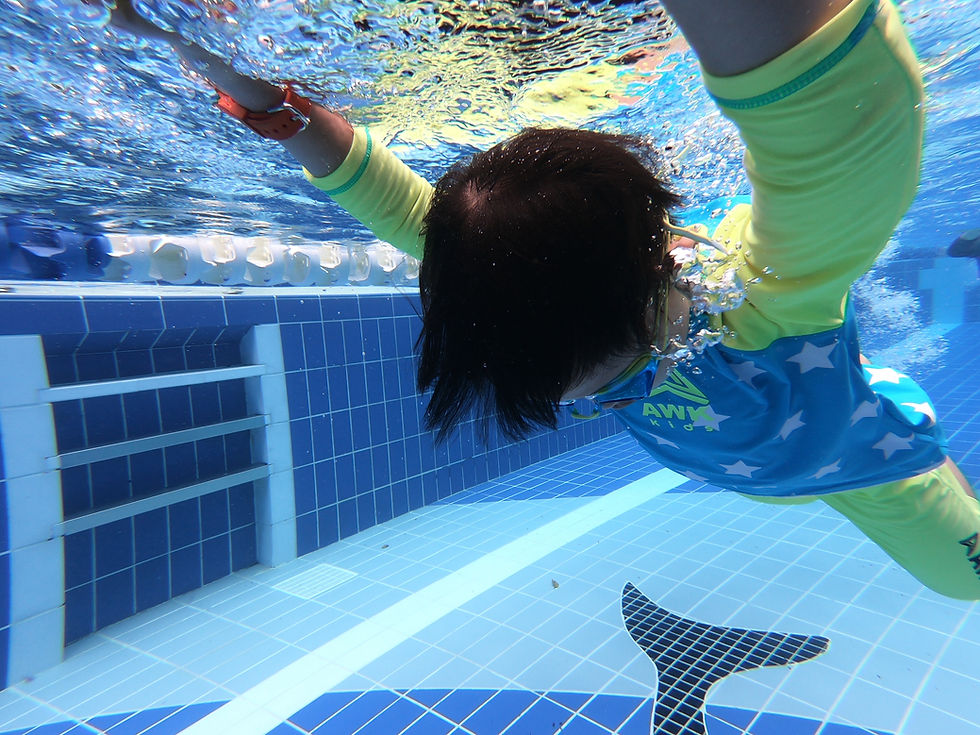How to Perform High-Elbow Recovery in Freestyle
- SG Sink Or Swim

- Aug 2
- 2 min read

The freestyle stroke is built on rhythm, efficiency, and balance — and one of its key technical components is the high-elbow recovery. This technique not only improves stroke mechanics but also conserves energy and reduces strain on the shoulder.
In this article, we’ll break down what high-elbow recovery is, why it matters, and how to master it through targeted drills and smart adjustments.
🧠 What Is High-Elbow Recovery?
High-elbow recovery refers to the movement of the arm above the water after the pull phase and before re-entry. During this phase:
The elbow leads the recovery motion
The forearm and hand stay relaxed and close to the body
The arm swings forward with minimal resistance
This movement contrasts with a stiff, straight-arm recovery that increases drag and fatigue.
💡 Why It Matters
A proper high-elbow recovery:
Keeps the shoulder in a safe, natural position
Reduces over-rotation and compensatory movements
Allows for relaxed and efficient arm swings
Maintains better body alignment
Sets up for a cleaner, more accurate hand entry
Especially over longer distances, this technique helps conserve energy and prevent shoulder injuries (e.g., swimmer’s shoulder).
🏊♂️ Key Technique Points
Relax the Arm – Think “loose and swinging,” not “rigid and reaching.”
Lead with the Elbow – It should be the highest point during recovery.
Keep the Hand Close – The hand should pass near the body line, not flail outward.
Use Core Rotation – Let body roll assist the arm’s movement, not just shoulder force.
Aim for Clean Entry – Hand enters fingertips first, shoulder-width apart.
🔁 Drills to Practice High-Elbow Recovery
1. Zip-Up Drill
Swim freestyle and "zip" your thumb up along your side and ribcage during recovery
Encourages high elbow and body awareness
✅ Great for isolating arm path and relaxation
2. Finger Drag Drill
Lightly drag your fingertips along the water surface during recovery
Forces elbow to stay high and hand low
✅ Builds muscle memory for correct arm path
3. Single Arm Freestyle
Swim using only one arm; the other stays at your side
Focus on high-elbow mechanics and clean entry
✅ Improves coordination and stroke timing
4. Sculling + Recovery Drill
Start with a sculling motion to engage feel of the water
Transition into high-elbow recovery to complete the stroke
✅ Combines water sensitivity with recovery control
🏋️♀️ Dryland Tips to Support High-Elbow Recovery
Shoulder mobility work (e.g., band pull-aparts, wall angels)
Thoracic rotation exercises (e.g., open books, trunk twists)
Light resistance band arm swings mimicking freestyle path
Yoga poses like thread-the-needle to maintain flexibility
⚠️ Common Mistakes to Avoid
🚫 Overreaching or locking the arm — causes fatigue and tightness🚫 Elbow too low — hand leads instead of elbow, increasing drag🚫 Tension in shoulder or wrist — leads to jerky recovery and poor entry🚫 Crossing over on entry — disrupts streamline and balance
🏁 Final Thoughts
The high-elbow recovery in freestyle is not just about elegance — it’s about efficiency, injury prevention, and performance. By training this movement both in the pool and on land, swimmers at every level can unlock smoother, stronger strokes that go the distance.





Comments